Overview
This article addresses a common challenge faced by startups: the need to enhance their brand identity. Many founders grapple with establishing a clear and consistent brand, which can feel overwhelming. This struggle not only impacts customer recognition and loyalty but also makes navigating competitive markets particularly daunting. It’s important to understand that without effective branding, startups may find it difficult to create a compelling narrative that truly resonates with their audience.
However, there is hope. By looking at established companies like Mailchimp, Nike, and Starbucks, we can see how effective brand guidelines can transform a startup’s approach. These brands have successfully fostered customer loyalty through clarity and consistency in their branding efforts. They serve as inspiring examples of how nurturing a strong brand identity can lead to meaningful connections with customers.
As you embark on your branding journey, remember that you are not alone. Many founders have walked this path and found success. Embracing clear brand guidelines can empower you to tell your story in a way that captivates your audience, creating a sense of community around your brand. Let us guide you through this process, offering support and expertise to help you thrive in a competitive landscape.
Introduction
In a marketplace overflowing with competition, many startups grapple with the challenge of establishing a unique identity that truly resonates with their target audience. The stakes are undeniably high; without a robust brand presence, these budding businesses risk slipping into obscurity, leaving their innovative ideas unacknowledged.
This article explores ten exemplary brand guidelines that not only illuminate the journey toward a compelling identity but also demonstrate how strategic branding can significantly enhance a startup's market presence.
What can we learn from the triumphs of industry leaders like Nike, Starbucks, and Adobe? How can we apply these valuable insights to navigate the hurdles that new ventures face? Together, let’s uncover the path to success.
RNO1: Transform Your Brand Identity with Innovative Strategies
Many tech startup founders grapple with the challenge of creating a strong and recognizable identity in a competitive marketplace. This struggle can lead to feelings of frustration and uncertainty, especially when trying to make an impact without the resources of larger companies. The implications of this issue are significant; without a compelling brand identity, startups risk being overlooked, which can stifle their growth and engagement with potential customers.
RNO1 understands these pain points and offers a transformative approach to identity creation that merges advanced digital experiences with a keen emphasis on user experience (UX) design. Their subscription models, including Revolve and Retrn, provide startups with ongoing marketing support, alleviating the pressure of maintaining large in-house teams. This adaptability is essential in a swiftly changing market, allowing companies to sustain a relevant and influential identity.
RNO1's services encompass brand guidelines examples such as:
- Brand Strategy & Experience Guidelines & Systems
- Go-To-Market Strategy
- Identity Design
These ensure that every project related to brand identity is aligned with market adoption principles. Statistics reveal that companies utilizing evidence-based personalization can achieve five to eight times higher ROI on marketing investments, underscoring the effectiveness of RNO1's results-driven strategies. Furthermore, with only about 30% of firms effectively utilizing their branding standards, the need for new businesses to embrace strong branding strategies is evident, as shown by brand guidelines examples.
By leveraging these innovative solutions, new ventures can craft a compelling narrative that resonates deeply with their intended audience, fostering engagement and driving sustainable growth. As Scott Cook insightfully states, "A label is defined by what consumers express about it, rather than what the company conveys." This reinforces the importance of a unified visual identity in establishing trust and connection with customers. A featured case study showcasing RNO1's impact on a tech startup could further illustrate the effectiveness of these strategies, providing relatable insights for founders navigating similar challenges.
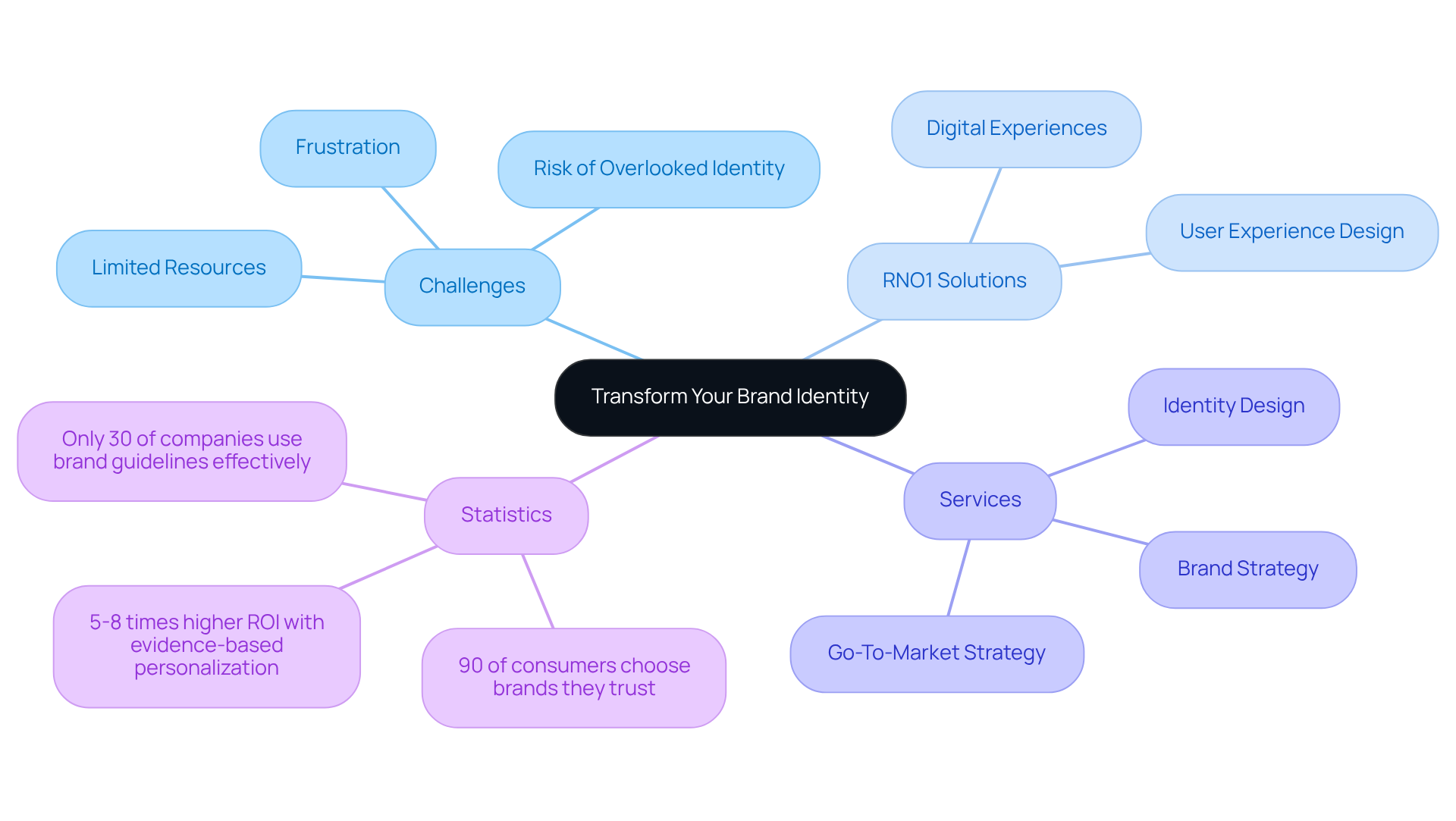
Mailchimp: Mastering Brand Consistency Through Clear Guidelines
In the world of startups, one pressing challenge is establishing a consistent identity. Many founders struggle with how to present their brand cohesively, and reviewing brand guidelines examples can help prevent confusion and a lack of recognition in the market. Mailchimp serves as a prime example, demonstrating consistency through comprehensive instructions that cover everything from logo usage to tone of voice. By meticulously defining these elements, they ensure that every interaction remains cohesive and recognizable.
Startups can take valuable lessons from this approach. By creating brand guidelines examples that outline essential visual and verbal elements, founders can foster trust and familiarity with their audience. This clarity not only enhances recognition but also cultivates customer loyalty over time. As the market evolves, the importance of strong branding principles becomes increasingly clear, providing a foundation for startups to navigate the competitive landscape effectively.
At RNO1, we understand the journey of purpose-driven companies. We fuel their growth through strategic activation, design empowerment, and comprehensive services, including:
- Content Strategy
- Go-To-Market Strategy
Our goal is to ensure that every entity we collaborate with stands out and connects meaningfully with its audience. Together, we can create a brand identity that resonates, fostering lasting relationships and success.
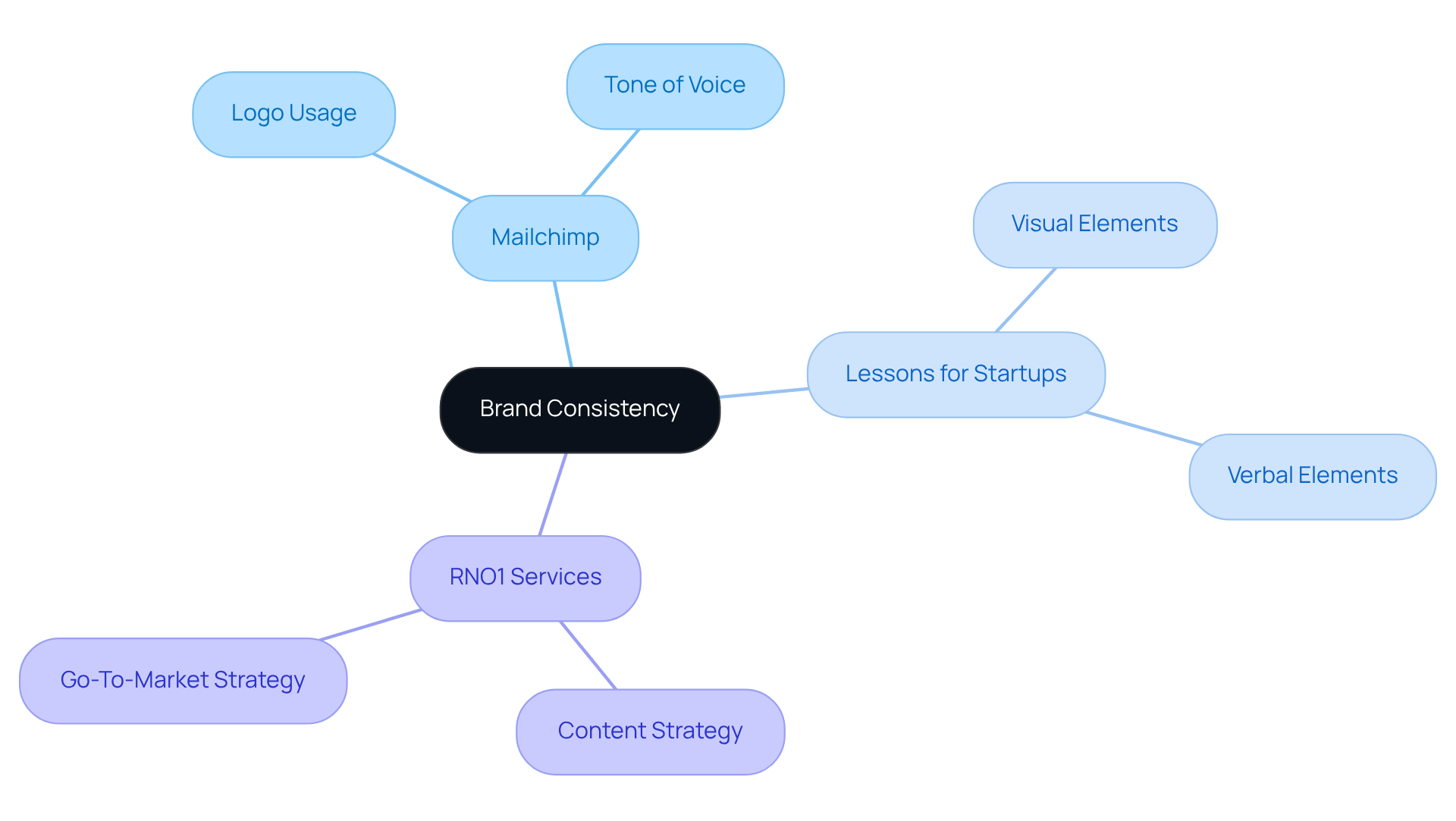
Dropbox: Building a Cohesive Brand Experience with Visual Clarity
Many startups face the challenge of establishing a clear visual identity, and brand guidelines examples can help alleviate this overwhelming task. This lack of clarity often leads to confusion among users, detracting from their experience and making it harder for them to connect with the brand, which highlights the importance of brand guidelines examples.
Imagine pouring your heart into your mission, only to have potential customers overlook your efforts due to inconsistent visuals. This is where RNO1 steps in with a nurturing approach to design. By advocating for a design-focused method, RNO1 emphasizes that each interaction should reflect a company’s core values and mission.
Startups can truly thrive by prioritizing visual consistency, which not only enhances user engagement but also follows brand guidelines examples to foster brand recognition. Through strategies like Return On Design & Digital (RODD), you can effectively maximize your marketability.
A well-defined visual identity, as RNO1 promotes with brand guidelines examples, can significantly influence how users perceive and engage with your company. It’s about creating a cohesive visual experience that resonates with your audience, ultimately driving growth in today’s evolving digital landscape.
Remember, you’re not alone in this journey; RNO1 is here to support you every step of the way.
Nike: Leveraging Brand Guidelines for Market Dominance
Nike's branding standards are meticulously crafted to ensure that every aspect of their identity—from advertising to product design—aligns with their core message of inspiration and innovation. However, many startups struggle with establishing such cohesive branding. This inconsistency can lead to confusion and missed opportunities in a competitive marketplace. Research shows that 70% of survey respondents believe consistent branding is crucial for effective communication with existing customers. Moreover, labels presented consistently are three to four times more likely to achieve visibility. This highlights the pain points that many new businesses face: without strong brand guidelines examples, they risk being overlooked.
At RNO1, we understand these challenges deeply. We believe that by developing comprehensive brand guidelines examples, startups can not only define their visual elements but also articulate their mission and values clearly. This strategic framework empowers them to stand out. Our services, including:
- Strategy & Experience Guidelines
- Identity Design
are designed to fuel the growth of purpose-driven companies. We are dedicated to creating design-oriented solutions that ensure every interaction is significant, enhancing marketability through our Return On Design & Digital (RODD) strategies.
It's important to recognize that 69% of companies indicate that branding standards are not widely embraced or do not exist. This statistic underscores the significant hurdles that new businesses must overcome. By tackling these obstacles and utilizing thorough identity standards, startups can improve their market visibility and achieve success. We invite you to share your experiences and challenges with branding, as we are here to support you on this journey.

Starbucks: Crafting a Memorable Brand Experience Through Detailed Guidelines
Starbucks serves as a powerful example of how comprehensive standards can create unforgettable experiences. Their thoughtful recommendations cover everything from store design to customer engagement, ensuring that every interaction reflects a commitment to quality and community.
For new businesses, the challenge of establishing a strong customer experience can feel daunting. It’s crucial to recognize that this challenge can lead to feelings of uncertainty and frustration. However, by adopting a similar framework, startups can transform these feelings into opportunities for growth.
By clearly defining brand guidelines examples, you can influence how customers feel and interact with your brand. This strategic approach not only enhances customer loyalty but also nurtures advocacy; a strong experience encourages repeat business and positive word-of-mouth.
Studies indicate that effective store design significantly impacts company image, reinforcing the belief that intentional marketing can cultivate lasting customer relationships.
Remember, you’re not alone in this journey—embracing these principles can lead to a supportive community around your brand, fostering connections that truly matter.
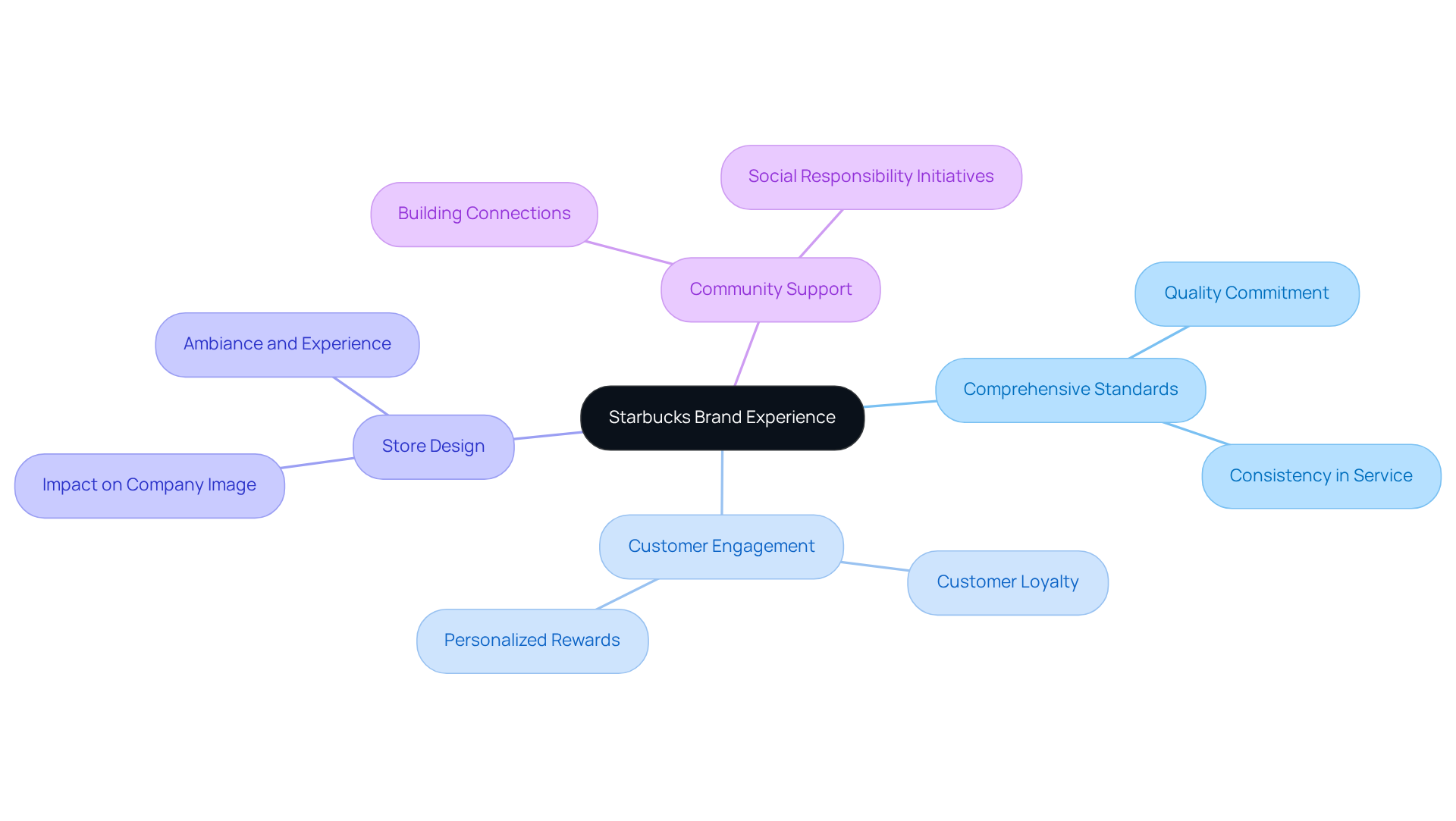
Asana: Enhancing Brand Communication with Accessible Guidelines
In the fast-paced world of tech startups, many founders grapple with the challenge of ensuring that their users can easily understand and engage with their identity. This struggle can lead to feelings of frustration and isolation, as the voices of diverse users often go unheard. RNO1 recognizes this problem and emphasizes accessibility in its company policies, creating a nurturing environment where everyone feels included. By offering brand guidelines examples that are clear and concise, RNO1 fosters an atmosphere that resonates with a wide range of audiences.
Startups can enhance their identity efforts by embracing RNO1's comprehensive brand guidelines examples. This includes invaluable services like:
- Strategy & Experience Guidelines
- Go-To-Market Strategy
These services empower purpose-driven companies through thoughtful identity design and effective market adoption. Imagine the positive impact on your organization’s reach and reputation as you cultivate a community that values accessibility. RNO1’s dedication to this principle not only helps expand your audience but also nurtures a positive reputation among users, leading to measurable success through collaborative strategies.
To further elevate your marketing initiatives, consider incorporating user feedback systems. Regularly revising your protocols to align with the evolving needs of your users can create a more responsive and caring environment. By listening to your audience, you not only address their pain points but also foster a sense of belonging and support. Together, we can create a future where every voice is heard and valued.
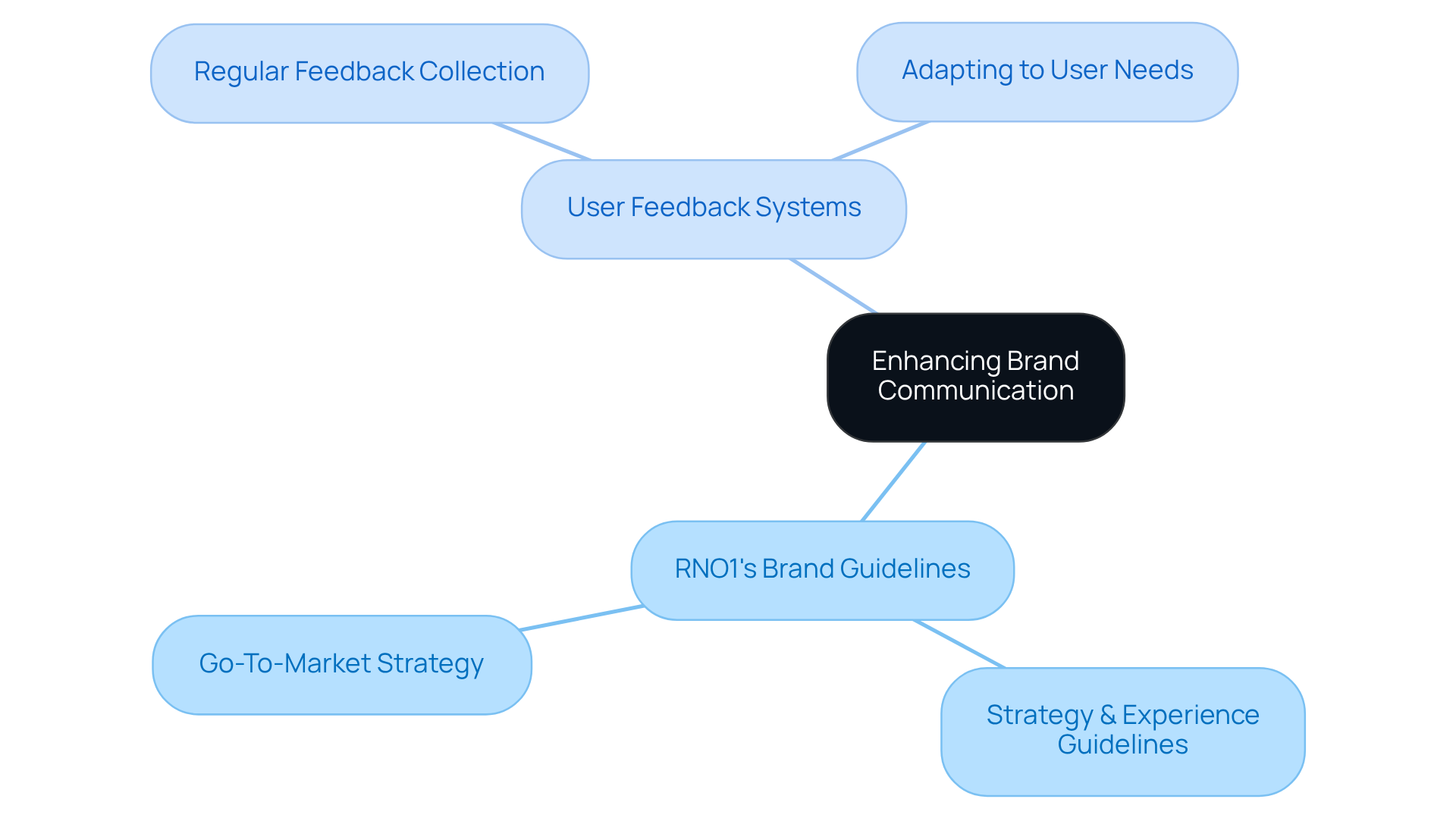
IBM: Establishing a Strong Brand Identity Through Innovation
In today’s fast-paced world, many tech startups struggle to carve out a strong identity. This challenge can feel overwhelming, especially when trying to keep up with rapid technological advancements. IBM has effectively tackled this by prioritizing innovation in its marketing strategies, demonstrating the importance of aligning messaging with these advancements. By doing so, they ensure their identity remains relevant, even as the market evolves. Startups can take a page from IBM’s playbook by weaving innovation into their marketing efforts, showcasing how their products or services leverage technology to address real-world challenges. This strategic alignment not only enhances product perception but also resonates with a tech-savvy audience.
Moreover, maintaining a consistent presentation across various platforms can significantly boost revenue, illustrating the tangible benefits of integrating technology into marketing strategies. As we approach 2025, the influence of technology on company identity will only grow, making it crucial for new businesses to align their messaging with technological insights. This alignment fosters trust and familiarity among consumers. RNO1 exemplifies this approach by championing the development of purpose-driven companies through comprehensive marketing strategies, identity design, and market adoption.
Their design-centered methodology ensures meaningful interactions, allowing startups to elevate their market presence through Return On Design & Digital (RODD) strategies, which underscore the importance of design in driving digital growth. Additionally, sharing case studies can provide practical examples of RNO1's marketing success, further illustrating their effective methodologies. By embracing these strategies, tech startups can navigate the complexities of the market with confidence and compassion.
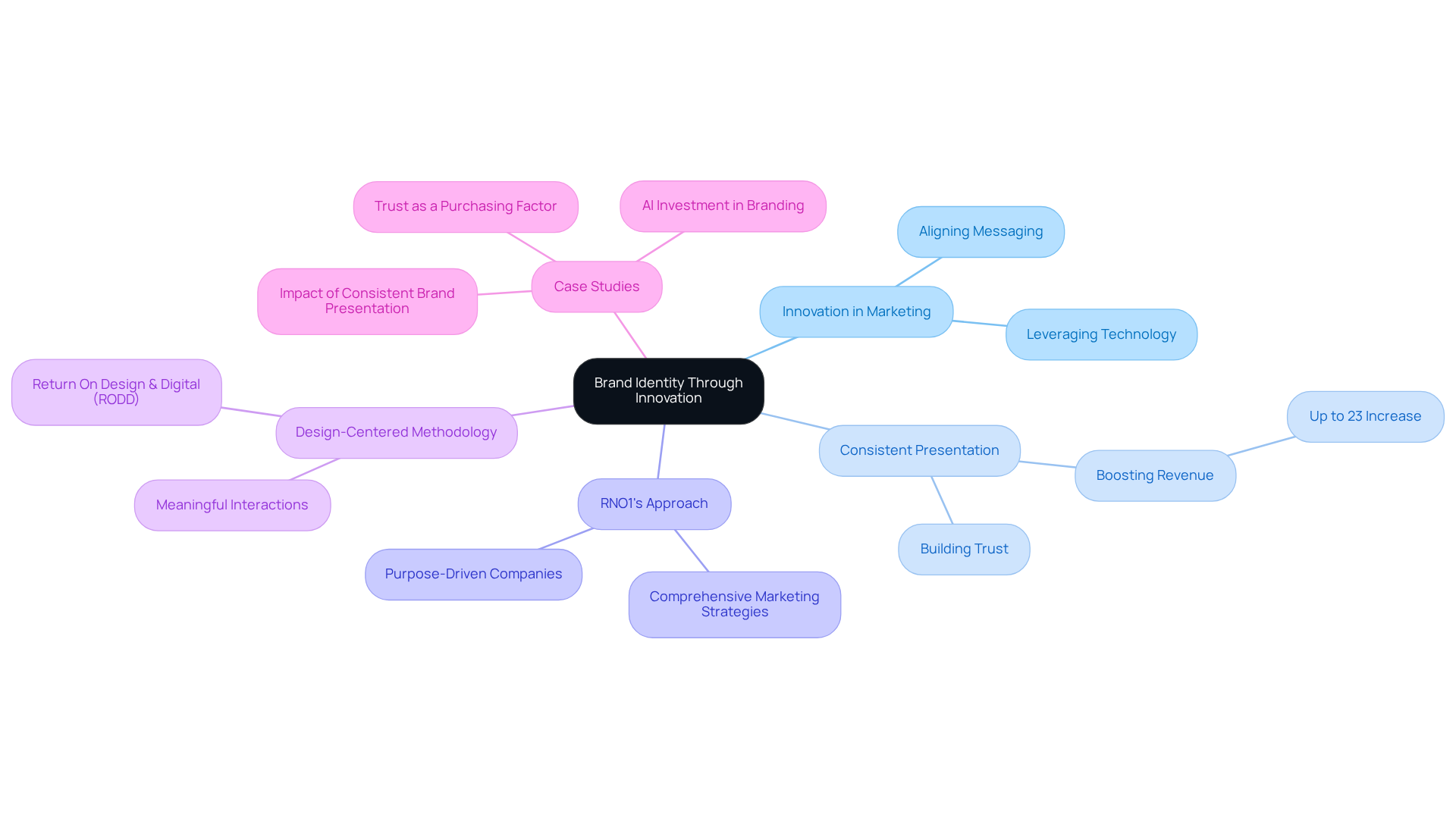
Spotify: Engaging Users with a Dynamic Brand Identity
In the fast-paced world of tech startups, many founders grapple with the challenge of creating a strong and recognizable identity. This struggle can often lead to feelings of uncertainty and frustration, especially when trying to connect with an audience that is constantly evolving. The implications of not adhering to brand guidelines examples can be profound, affecting not just brand recognition but also user engagement and loyalty.
But there is hope. Look at Spotify, whose dynamic and engaging approach resonates deeply with its audience. Their identity guidelines allow for flexibility, enabling them to adapt to changing trends and user preferences. Startups can take a page from Spotify's book by creating brand guidelines examples that establish an identity which is both consistent and adaptable to market shifts.
By embracing a comprehensive marketing strategy that includes RNO1's Brand Strategy & Experience Guidelines and Content Strategy, startups can empower their identities. This approach fosters deeper connections with users, turning casual interactions into meaningful relationships. Imagine the impact of a design-focused method that not only enhances market appeal but also promotes lucrative eCommerce interactions. It’s a nurturing way to sustain user engagement and cultivate a devoted customer base.
As you navigate this journey, remember that you are not alone. Many have walked this path and found success by leaning into their unique stories and values. Let RNO1 support you in creating an identity that resonates and endures, helping you to foster a community of loyal users who believe in your vision.
Adobe: Fostering Creativity and Consistency in Brand Guidelines
In the fast-paced world of tech startups, many founders struggle with the challenge of establishing a cohesive brand identity. This issue can lead to confusion among potential customers, making it difficult for new businesses to stand out. The implications are significant: without a clear identity, startups risk losing their unique voice in a saturated market, which can hinder their ability to connect with their target audience.
At Adobe, the identity principles demonstrate a successful blend of creativity and consistency, allowing companies to project a unified image while fostering innovative design. By promoting clear messaging alongside creative expression, Adobe empowers organizations to articulate their unique identities effectively. Startups can mirror this approach by creating brand guidelines examples that prioritize both consistency and creativity. RNO1’s method of identity through services like Brand Strategy & Experience Guidelines and Identity Design exemplifies this balance, which is vital for differentiation and can be illustrated by their brand guidelines examples.
As we approach 2025, the demand for innovative expression in marketing is set to rise, making it increasingly important for new businesses to adopt strategies that help them distinguish themselves. Furthermore, with 90% of consumers expecting seamless experiences across various platforms, it's crucial for startups to ensure their identity efforts are cohesive across all touchpoints. Consistent marketing is akin to compounding interest—it requires time and patience, but the rewards can be substantial. By fostering a consistent visual identity, brands can achieve up to 80% better recognition, a key factor in capturing consumer attention and driving engagement.
Ultimately, embracing a nurturing approach to brand identity not only helps startups connect with their audience but also fosters enduring relationships with clients. We invite you to share your experiences and explore how RNO1 can support you on this journey.
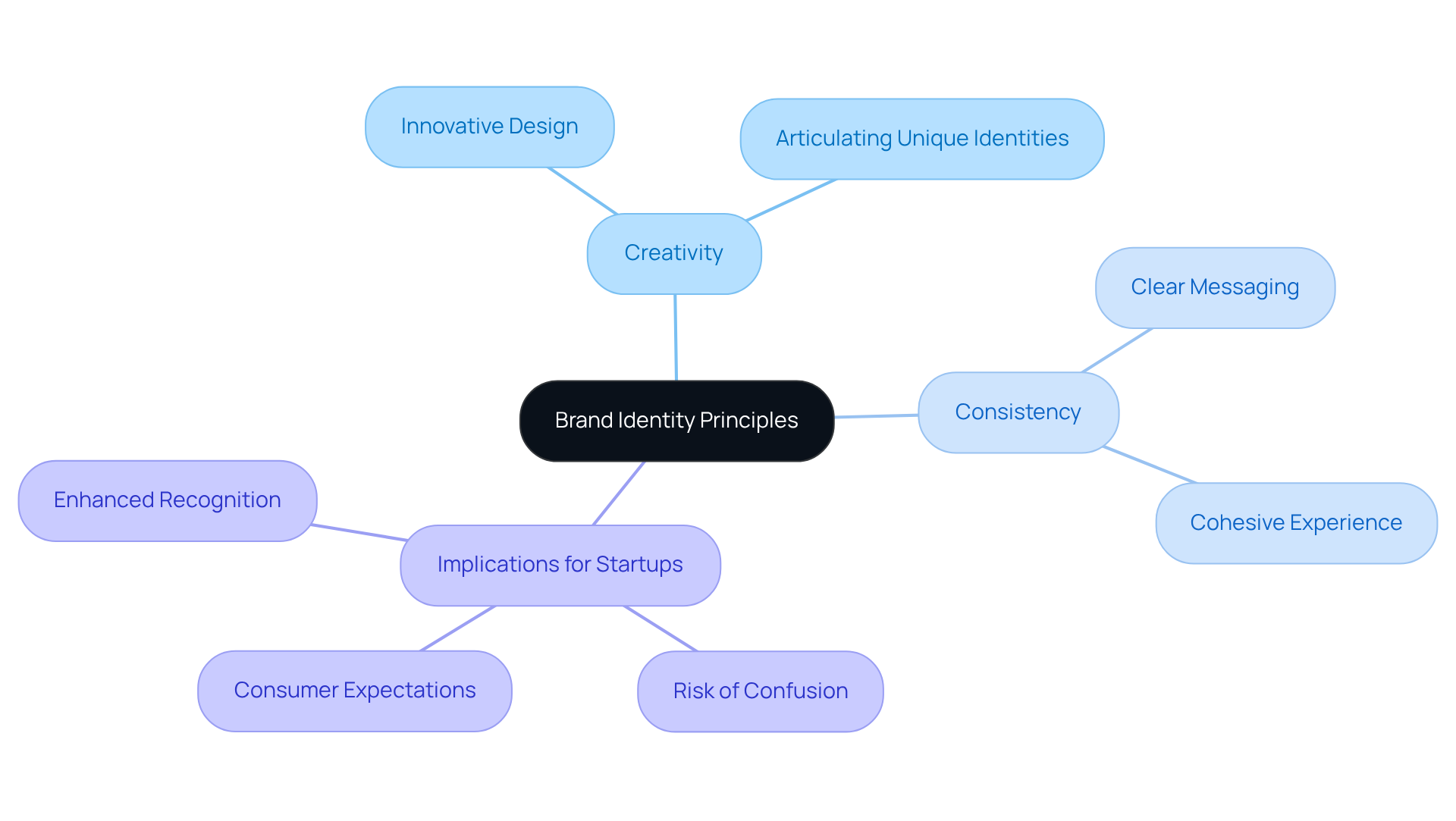
Netflix: Crafting a Compelling Brand Narrative Through Guidelines
In today’s competitive landscape, many tech startup founders face the challenge of connecting with their audience. This connection is crucial, as storytelling in marketing can transform a brand from being just another name to a relatable entity. When customers feel emotionally involved with a company, they exhibit a staggering 306% higher lifetime value and are 26% more likely to recommend it to others.
For new ventures, crafting an engaging narrative that resonates with their target audience is not just important; it’s essential. This narrative should authentically mirror the company's values and mission, fostering brand loyalty and deeper customer engagement.
As we look ahead to 2025, the competition will only grow fiercer. New ventures that harness the power of storytelling will stand out, nurturing stronger relationships with their customers and paving the way for sustainable growth.
RNO1 offers a comprehensive approach to branding strategy, including:
- Brand Strategy & Experience Guidelines
- Identity Design
This empowers startups to create narratives that leave a lasting impact. By focusing on design-oriented solutions and refining brand guidelines examples, new businesses can enhance their marketability and develop a profitable eCommerce experience.
To put these insights into practice, startups should prioritize:
- Creating optimized landing pages
- Engaging social media strategies that truly reflect their unique stories.
We invite you to share your experiences and thoughts on this journey, as together we can foster a community of support and growth.
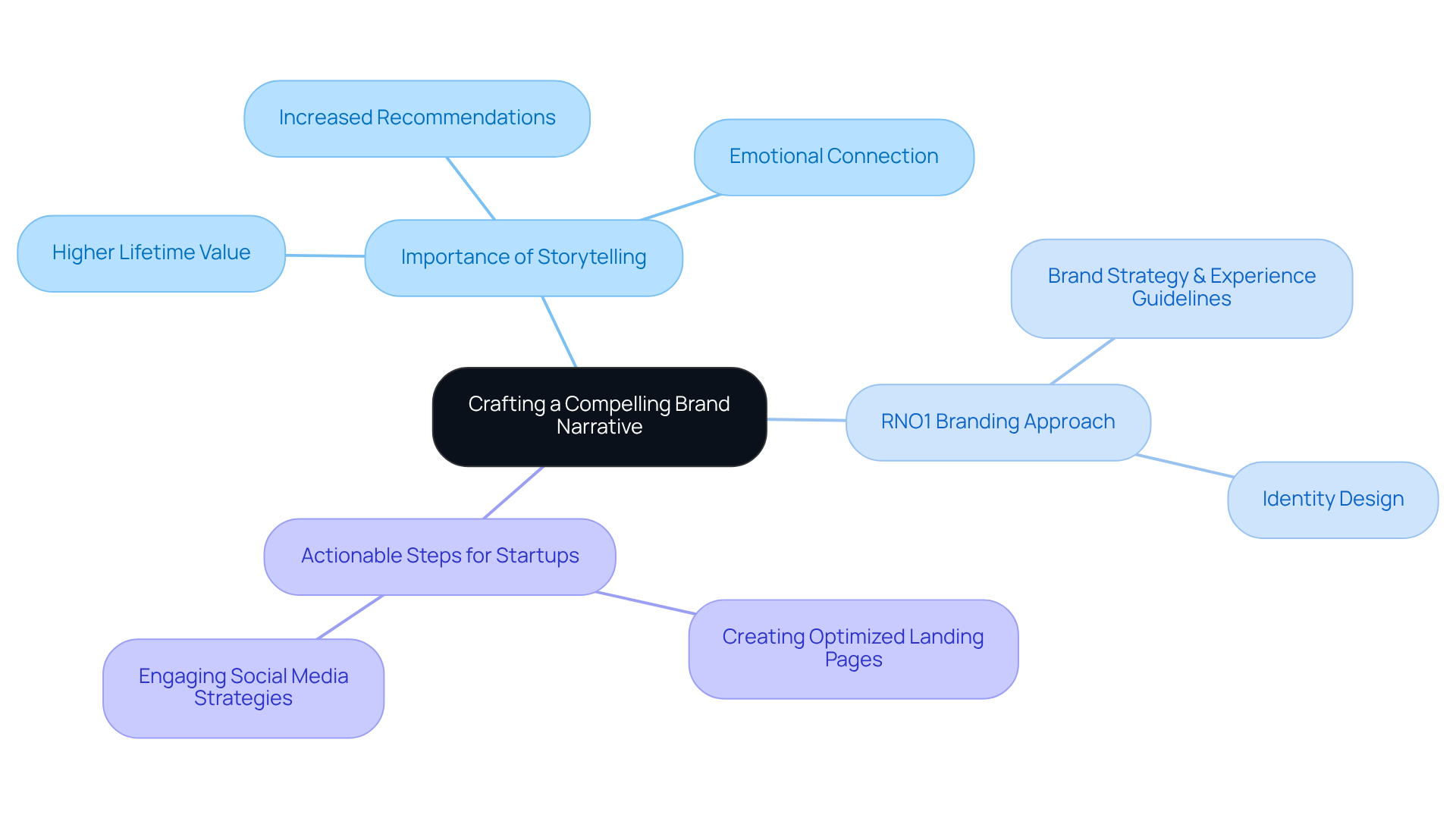
Conclusion
Establishing a strong brand identity can feel overwhelming for startups striving to differentiate themselves in a crowded market. The insights gleaned from various brand guidelines examples highlight the vital need for a cohesive and recognizable identity that truly resonates with audiences. By drawing inspiration from industry leaders like RNO1, Mailchimp, and Nike, startups can navigate the complexities of branding with newfound confidence and clarity.
As we reflect on the key takeaways, it's clear that consistency, creativity, and adaptability are essential elements of brand identity. Companies such as Starbucks and Adobe illustrate how detailed guidelines can create memorable customer experiences and foster innovative expression. Furthermore, the focus on user engagement—exemplified by Spotify and Asana—demonstrates how a dynamic branding approach can cultivate lasting relationships and drive meaningful growth.
In a landscape where competition is fierce and consumer expectations soar, it becomes paramount for startups to prioritize the development of robust brand guidelines. Embracing these principles not only enhances market visibility but also nurtures trust and loyalty among customers. As your journey unfolds, remember that a well-defined brand identity is not merely an asset; it serves as the foundation for sustainable success. By investing in strategic branding efforts today, you can pave the way for a thriving future, ensuring that your unique stories and values resonate deeply with your target audiences.
Frequently Asked Questions
What challenges do tech startup founders face regarding brand identity?
Tech startup founders often struggle to create a strong and recognizable identity in a competitive marketplace, leading to frustration and uncertainty, especially when they lack the resources of larger companies.
How does RNO1 help startups with their brand identity?
RNO1 offers a transformative approach to identity creation that combines advanced digital experiences with a focus on user experience (UX) design. They provide subscription models like Revolve and Retrn for ongoing marketing support, helping startups maintain a relevant and influential identity without the need for large in-house teams.
What services does RNO1 provide related to brand identity?
RNO1's services include brand strategy and experience guidelines, go-to-market strategy, and identity design, ensuring all brand identity projects align with market adoption principles.
What are the benefits of using evidence-based personalization in branding?
Companies that utilize evidence-based personalization can achieve five to eight times higher ROI on marketing investments, highlighting the effectiveness of results-driven branding strategies.
Why is it important for startups to have strong branding strategies?
With only about 30% of firms effectively using their branding standards, new businesses need to embrace strong branding strategies to avoid being overlooked and to foster engagement and sustainable growth.
How can startups learn from Mailchimp's approach to brand consistency?
Mailchimp demonstrates the importance of comprehensive brand guidelines that cover logo usage and tone of voice, ensuring every interaction is cohesive and recognizable, which fosters trust and customer loyalty.
What is the significance of visual identity for startups?
A clear visual identity helps prevent confusion among users and enhances their experience, making it easier for them to connect with the brand. RNO1 emphasizes that each interaction should reflect a company's core values and mission.
How does RNO1 support startups in building a cohesive brand experience?
RNO1 advocates for a design-focused approach that prioritizes visual consistency, which enhances user engagement and brand recognition, ultimately driving growth in the digital landscape.
What strategies does RNO1 use to maximize marketability?
RNO1 employs strategies like Return On Design & Digital (RODD) to effectively maximize marketability and create a cohesive visual experience that resonates with the audience.




